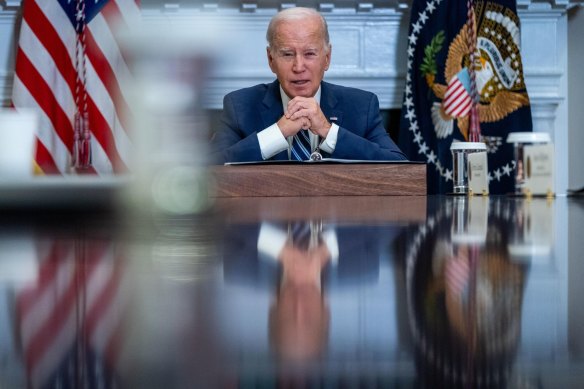
Can Australia compete in manufacturing with economies far larger – the US economy is about 15 times the size of Australia’s and China about 10 times - and with vastly greater domestic markets, cheaper labour and energy costs? The equally pertinent question is whether we should even try to compete with them.
Loading
Last week, the International Monetary Fund released a paper on the increasing deployment of industry policies designed to boost activity and innovation in specific sectors and provide supply chain security.
“Industrial policy, in which governments support individual sectors, can drive innovation if done right. But striking the right balance is a crucial consideration, as history is full of cautionary tales of policy mistakes, high fiscal costs and negative spillovers in other countries,” it said.
The IMF paper says most industry policies rely heavily on costly subsidies or tax breaks (as the “Future Made in Australia” policy is expected to do), which it says can be detrimental to productivity and welfare unless effectively targeted.
Some industry policies can be justified if they support sectors that generate strong knowledge spillovers to the domestic economy (the paper cited the semiconductor sector) or drive green innovation, but policies had to be designed to avoid wasteful spending and protectionist measures that could further fragment global trade, the IMF paper said.
Historical experience suggested that getting industry policy right is a tall order and could lead to inefficient resource allocation, it said.
Loading
It also noted that not all countries benefit equally from industry policies, as the ability to influence cross-sector knowledge spillovers was generally more limited in small or more open economies because a larger share of their knowledge flows come from abroad or is exported.
More open economies – and Australia has a very open, very trade-exposed economy – were less able to complement research and development support with production or demand-side subsidies because they were more integrated with global markets and supply chains.
Another research paper from the Federal Reserve Bank of New York looked at the other side of the new trade frictions and concluded that America’s export controls that target the shipping of high-end semiconductors and other advanced technologies to China had cost the affected suppliers about $US130 billion ($202 billion) of sharemarket value and caused slumps in revenues and profitability. There was no evidence that those companies had re-shored or friend-shored production and jobs.
In other words, both the IMF and the Fed’s New York branch have concluded that the new protectionism (sorry, the new competition) can carry significant economic costs.
Loading
We already know this from the direct experience of throwing billions of dollars of taxpayer funds in the futile attempt to prop up the local car manufacturing sector during the 1980s, 1990s, and into the middle of the last decade.
Despite the massive subsidies, we no longer have a local auto manufacturing sector – just as the tearing down of the tariff walls in the 1980s and 1990s gutted a broader swathe of far less advanced manufacturing industry players – because of the structural disadvantages local manufacturers face.
A small domestic market, the tyranny of distance from other significant markets, high labour and (increasingly) energy costs, stringent environmental protections and a commodity-driven currency that can fluctuate quite violently (it’s ranged from less than 50 US cents to $US1.10 this century) make it impossible for this economy to compete in the major manufacturing sectors.
China produces almost 80 per cent of the world’s solar panels and most of the components used in their fabrication, the most important of which is polysilicon, which is extremely energy-intensive. Its scale, government-subsidised investment in leading-edge solar technologies, cheap brown coal and, more recently, vast solar farms provide it with a massive competitive advantage.
Even the US, which has increased its production volumes thanks to Biden’s subsidies, has a global market share of only about 2 per cent.

Increasing protectionism: Joe Biden’s America is determined to deny China access to the leading edge chip technologies.Credit: Bloomberg
How are we supposed to compete? Where’s the comparative advantage? Instead of buying solar panels as cheaply as possible from China (or US or European subsidised panels), we’ll dump taxpayer funds into their production to make them appear competitive.
We don’t process critical minerals on any significant scale here because it’s environmentally messy, energy—and capital-intensive, and the returns on companies and the nation’s capital from efficiently mining them and shipping them out to be processed are far higher.
Apparently, subsidising processing will somehow make the processing piece more competitive. It will generate added value, but we also know from experience that there are diminishing returns from value-adding in a high-cost economy.
Loading
It would be a better economic outcome for Australians if US taxpayers subsidised that processing while we focused on making our broader economic settings more competitive, our workforce better educated and skilled, and our institutions better equipped to pursue the fundamental research and development that drives innovation and creates real comparative advantage in advanced economies.
The experience of ending protectionism in the 1980s and 1990s, amid fierce debates, is salutary.









 Add Category
Add Category